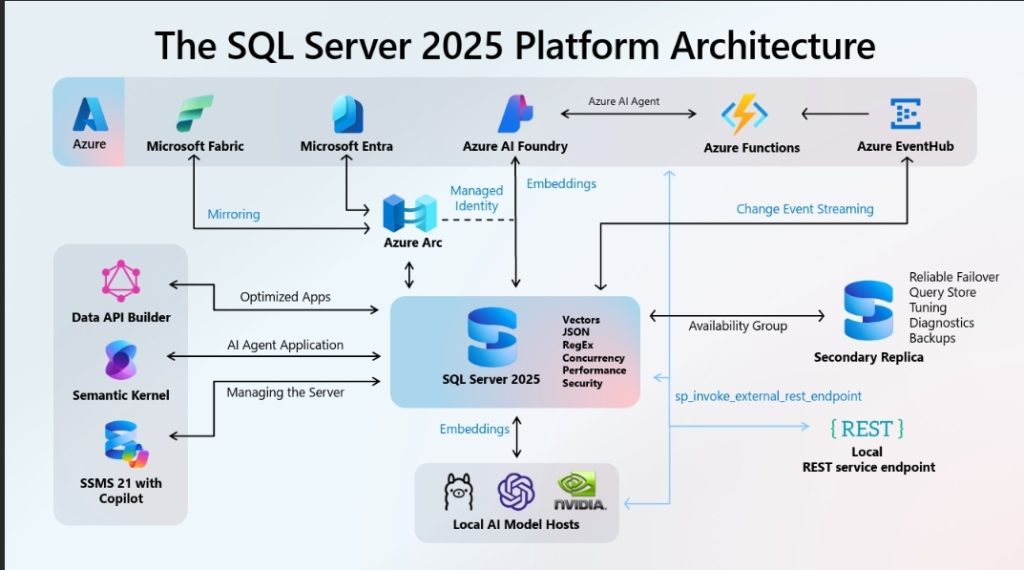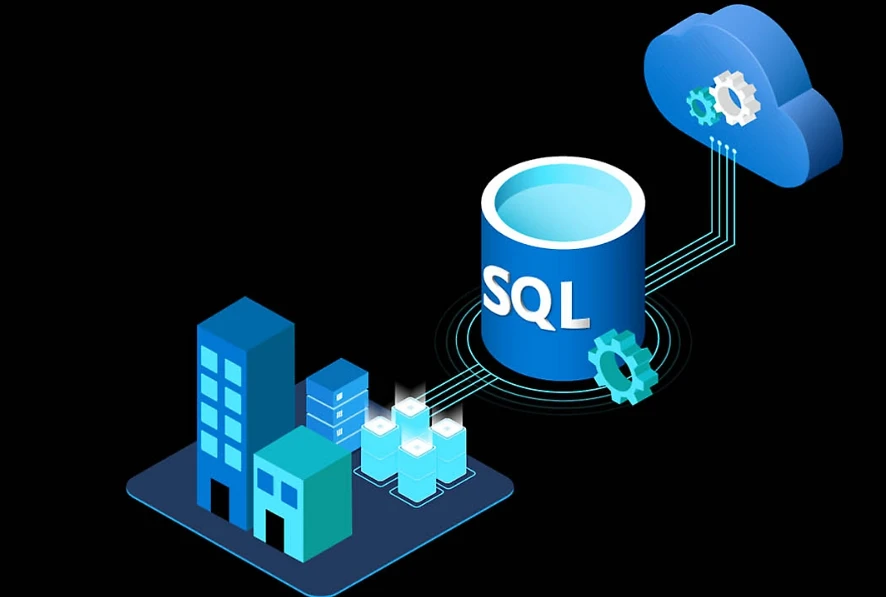The tech community has much to talk about as Microsoft’s SQL Server 2025 Public Preview goes live. Coinciding with the energy of this year’s Microsoft Build conference, anticipation runs high, and the early feedback is overwhelmingly positive. It is clear the SQL Server platform is entering a bold new era—one that invites database developers, architects, and solution providers to reimagine what’s possible.
Initially, excitement swirled around the sessions delivered by Bob Ward and Muazma Zahid at Build. Their presentation, “SQL Server 2025: The Database Developer Reimagined,” immediately positioned this update as the most developer-focused release in over a decade. Yet, as the conversation shifted, it became clear that several engineering advancements set this public preview apart. In fact, over 40 new features and enhancements figure into the latest version, solidifying SQL Server’s position as a leading relational database management system (RDBMS).
From the perspective of high availability specialists like the DH2i team, several themes stand out. Practitioners are especially eager about new artificial intelligence (AI)-centric features, the expanding platform flexibility, and the robust security, performance, and availability enhancements. These themes not only reflect Microsoft’s strategic roadmap but also indicate the transforming expectations of database customers—and their desire for a seamless, reliable experience.
SQL Server 2025’s AI-Centric Innovations
Perhaps the most attention-grabbing news is SQL Server 2025’s deep integration with AI. The debut of Vector Search represents a pivotal shift, empowering database professionals to build advanced generative AI (GenAI) applications while using familiar T-SQL syntax. Public preview users can now readily experiment with these capabilities, giving organizations a low-friction path to AI adoption.
Another highlight is the concept of “Operational” Retrieval-Augmented Generation (RAG). Traditionally, RAG allows large language models (LLMs) to supplement information retrieval with content generation—using external sources like knowledge bases or the open web. Ward’s session explained that with SQL Server 2025, there is “no separate vector store sitting outside of the SQL engine.” Instead, vector data and operational data are united, enabling AI applications to tap into current operational insights without sacrificing the stability and simplicity of the SQL environment. This approach minimizes latency and removes the integration overhead typical of disconnected vector stores.
Additionally, the Structured Queries feature brings LLMs closer to the heart of enterprise data. Now, LLMs can query structured data, leverage metadata, and harness SQL Server’s built-in query optimization—delivering targeted, contextually relevant results. Taken together, these enhancements signal not just a technical leap, but a reimagined developer and user experience when building and deploying AI-powered services.
Flexibility Across Platforms and Infrastructure
Today’s enterprises operate in a hybrid world—cloud, edge, on-premises, and everything in between. Microsoft’s development philosophy for SQL Server 2025 reflects this reality. As was emphasized at Build, the new AI capabilities work “from ground to cloud to fabric.” Whether running in Azure SQL, on-premises with SQL Server 2025, or inside the new SQL Database in Fabric, users are never limited by infrastructure. Developers and architects can be confident that critical workloads and AI innovations remain portable.
Moreover, SQL Server 2025’s focus on platform flexibility creates practical freedom for organizations. Teams can optimize for performance, regulatory requirements, or cost efficiency, all while maintaining a unified operational model. This platform consistency means enterprises can modernize at their own pace—and do so without trade-offs when it comes to capabilities or support for the latest AI trends.
Security at the Forefront
With every generational leap in data capability comes new questions about security. Now, the introduction of AI-related features in SQL Server 2025 naturally leads customers to ask: how will my data be protected when integrating with third-party LLMs or external AI endpoints?
Microsoft’s engineering team anticipated these concerns. Through careful design, SQL Server 2025 keeps the core engine isolated from AI services. Connections to AI inference endpoints or LLMs are handled strictly over REST APIs. This ensures a hardened boundary between operational workloads and AI processing. Critical access controls—roles, permissions, authentication—remain squarely in the user’s hands, just as they always have been for on-premises SQL Server deployments. Thus, organizations maintain continuity in their security posture, while moving forward with AI innovation.
Performance and Availability: Built for Modern Demands
For many SQL Server users, high performance and availability are non-negotiable. The 2025 public preview doesn’t disappoint; in fact, it introduces numerous enhancements to core engine reliability and concurrency.
One area of notable improvement is SQL Server Availability Groups (AGs). Over a dozen new features target AGs, underpinning business-critical use cases with:
- Improved reliability for AG failovers
- Enhanced tuning and diagnostics
- Full database and differential backups on secondary replicas
Performance buffs will appreciate improvements in concurrency, allowing developers to run complex queries while maintaining stability and speed. These features mean developers and operators can spend less time troubleshooting and more time innovating. Seamless operation is now more attainable, even at scale.
How DxEnterprise Optimizes the SQL Server 2025 Experience
DH2i has long partnered with SQL Server users through its DxEnterprise high availability (HA) platform. Now “SQL Server 2025 Public Preview-Ready,” DxEnterprise further cements its role as a smart, unified solution for HA clustering—replacing traditional options like Windows Server Failover Clustering or Red Hat Pacemaker.
DxEnterprise supports all infrastructure models: Windows, Linux, and Kubernetes. It sits at the intersection of flexibility and resilience, enabling organizations to efficiently manage their SQL Server HA across traditional, cloud, or mixed environments.
With SQL Server 2025, DH2i’s expertise becomes especially valuable for teams keen on building AI-powered applications. Number one, DxEnterprise keeps even vector stores and AI database workloads highly available. Number two, organizations can trust the platform to support container-centric deployments—ensuring rapid, automatic failover for all AGs, regardless of environment.
Key capabilities include:
- Easy deployment of SQL Server 2025 Availability Groups in Kubernetes with DxOperator
- The industry’s lowest downtime via automatic failover in Kubernetes
- Unified management of AGs across Windows, Linux, and Kubernetes
This marriage of next-gen RDBMS and cutting-edge HA technology provides peace of mind for organizations with mission-critical needs.

Next Steps: Building the Future of Data-Driven Applications
The arrival of SQL Server 2025 Public Preview at Microsoft Build symbolized more than just a product update—it marked a pivotal shift into the Age of AI for enterprise data.
DxEnterprise enables IT leaders and data professionals to step through this door confidently, embracing innovation without sacrificing availability, performance, or flexibility. Whether deploying AI applications, modernizing legacy infrastructure, or simply seeking a better HA experience, combining SQL Server 2025 with DH2i technology represents a future-proof approach.
For those ready to build highly available AI solutions, getting a start is simple. Just download the public preview of SQL Server 2025 and the DxEnterprise trial. Or, consider reaching out to DH2i for a tailored demo—ensuring that unique pain points are addressed while efficiency and reliability are maximized.
In summary, the SQL Server 2025 era is one of opportunity, and with the right partners and solutions, organizations can truly reimagine what’s possible in data, AI, and customer experience.

